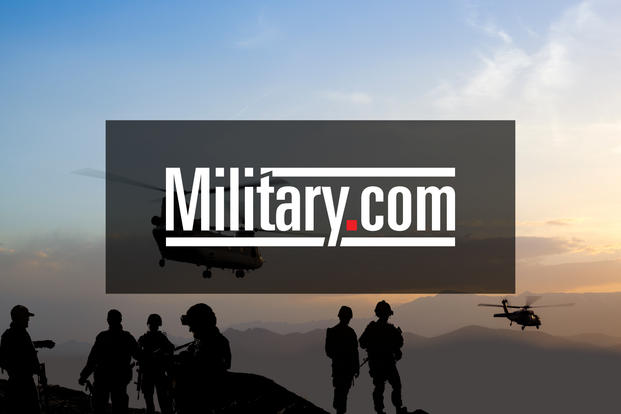It was late afternoon on Feb. 26, 1991, during the Gulf War when then-Capt. H.R. McMaster ran into a superior Iraqi armored force lying in wait to halt the main U.S. advance into occupied Kuwait.
McMaster commanded Eagle Troop of 2nd Squadron, 2nd Armored Cavalry Regiment. The 2nd ACR was providing an offensive covering force for the U.S. Army's VII Corps.
Advancing through a heavy sandstorm, McMaster's nine M1 Abrams Tanks and 12 M3 Bradley Fighting Vehicles made contact with the large Iraqi defensive belt in the featureless Iraqi desert.
His troop destroyed approximately 50 T72 Tanks and about 25 other armored vehicles in 23 minutes in what would become known as the Battle of 73 Easting of Operation Desert Storm.
McMaster was awarded a Silver Star, the nation's third-highest valor award, for his actions during that short-lived conflict.
Twenty-six years later, Lt. Gen. McMaster has been selected to serve as national security adviser to the Trump administration.
He's known as a strategic thinker within the U.S. military who most recently served as director of the Army Capabilities Integration Center and deputy commanding general at U.S. Army Training and Doctrine Command, based at Joint Base Langley-Eustis in Virginia.
He's the first active-duty officer to serve in the role since Colin Powell, then a three-star general, assumed the job in President Ronald Reagan's final two years in office.
Traditionally, the post doesn't require Senate confirmation, but it's still unclear whether that will change since McMaster is a three-star general taking on a new assignment, The Associated Press reported.
Now 54, McMaster also gained a reputation for the success he had during another war in Iraq in the city of Tal Afar in 2005. Then a colonel commanding the 3rd Armored Cavalry Regiment, McMaster stressed counterinsurgency rather than sledgehammer tactics to quell violence being carried out by Sunni militants against the city's Shiite minority.
But as the U.S. military focuses on reclaiming its prowess for high-intensity combat with potential foes such as Russia, McMaster's personal experience with armored warfare may serve him well as the new NSA.
"Although future battles will likely be fought against more capable enemies and under more challenging and complex conditions, there are lessons from battlefield victories twenty-five years ago that remain relevant to combat readiness today and in the future," McMaster wrote in an essay that ran on strategybridge.org for the 25th anniversary of Desert Storm.
Battle of 73 Easting
During the Battle of 73 Easting, McMaster faced a capable foe in the enemy commander, known as Major Mohammed, a graduate from the U.S. Army Infantry Officer Advanced Course at Fort Benning, Georgia.
Mohammed and his men knew the ground well, but he was unaware of the U.S. military's brand-new global positioning system capabilities, so he assumed that American units would have to move along roads to avoid becoming lost in the featureless desert, McMaster wrote.
He organized his defense along the road by fortifying the village with anti-aircraft guns to be used in the ground mode; machine guns; and infantry.
"Mohammed's defense was fundamentally sound," McMaster wrote.
He built two engagement areas or kill sacks on the eastern side of the ridge to the north and the south of the village, emplaced minefields to disrupt forward movement, and dug in approximately 40 tanks and 16 Soviet-era amphibious tracked vehicles known as BMPs about 1,000 meters from the ridge.
Hundreds of infantry troops occupied bunkers and trenches between his armored vehicles. He positioned a reserve of 18 T72 Tanks and his command post along another subtle ridgeline approximately three thousand meters further east.
It rained hard during the night of the Feb. 25, and there was heavy fog the next morning that limited visibility to 200 meters. The fog lifted late in the morning, but a blinding sandstorm came in behind it. The 2nd Armored Cavalry Regiment's air cavalry squadron was grounded for more than half of the day.
Eagle Troop advanced and made first contact with the enemy just after 4 p.m. when the unit began taking 23mm cannon and machine-gun fire.
McMaster put his nine tanks at the head of the formation.
"As our tank came over the crest of the imperceptible rise north of the village, Sergeant Craig Koch, the gunner, reported 'tanks direct front;' I counted eight [T-72s] in prepared positions," McMaster wrote.
All nine of Eagle's tanks began engaging together as they advanced. In approximately one minute, everything in range was in flames.
The burning tanks and personnel carriers of the enemy's first defensive line formed a curtain of smoke that concealed the enemy further to the east, McMaster wrote.
McMaster's tanks assaulted through the smoke. Enemy armored vehicles and large numbers of infantry ran to get back to their trench lines and positions.
"We destroyed the enemy armored vehicles quickly and shot the infantry with machine guns as we closed the distance with them," McMaster wrote.
As Eagle Troop cleared the westernmost defensive positions, McMaster made the decision to move past his limit of advance of 70 Easting, a north-south grid line on the map.
"We had surprised and shocked the enemy; stopping would have allowed them to recover," he wrote.
McMaster's unit attacked toward a subtle ridgeline on which the enemy positioned his reserve, a coil of 18 T72 tanks.
"Major Mohammed later told one of our troopers that he had not known he was under attack until a soldier ran into his elaborate command bunker yelling, 'tanks, tanks!' McMaster wrote.
"By the time he got to his observation post, all the vehicles in defensive positions to the west were in flames. He ordered the reserve behind him to establish a second defensive line. It was too late.
"Eagle Troop's tanks crested the rise and entered their assembly area. The tanks were starting to move out when we destroyed them at close range."
-- Matthew Cox can be reached at matthew.cox@military.com.






























